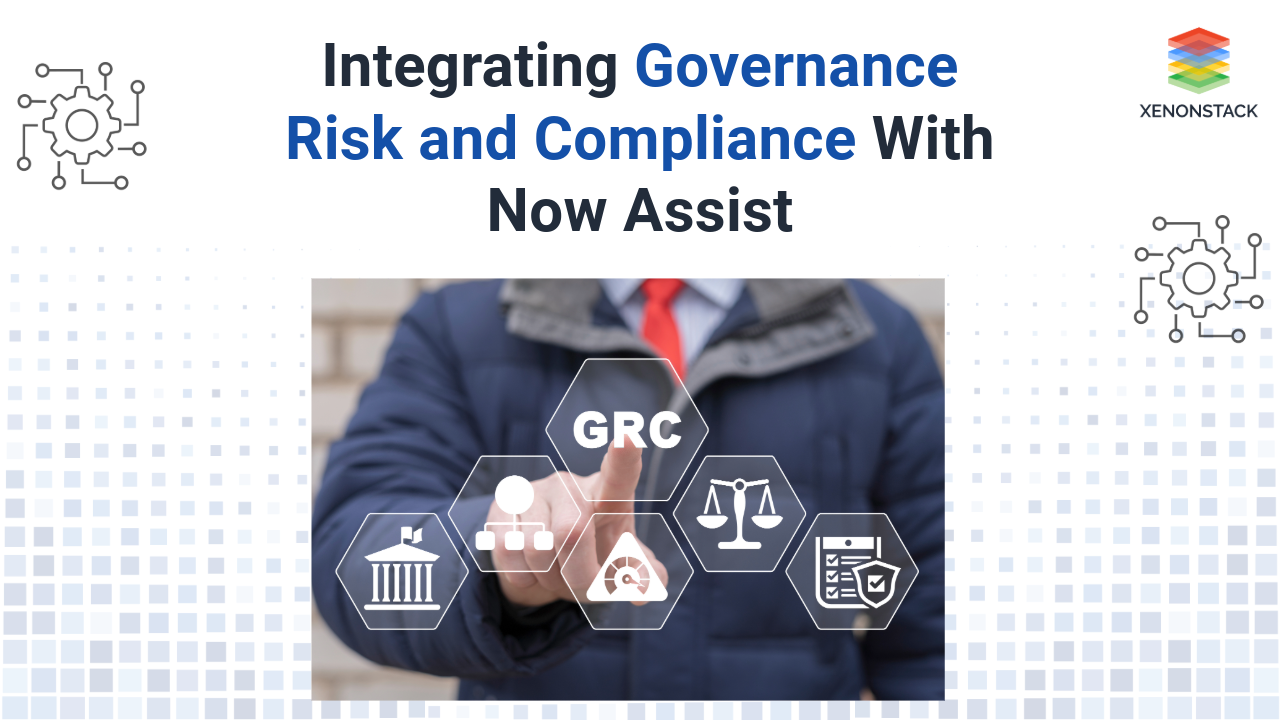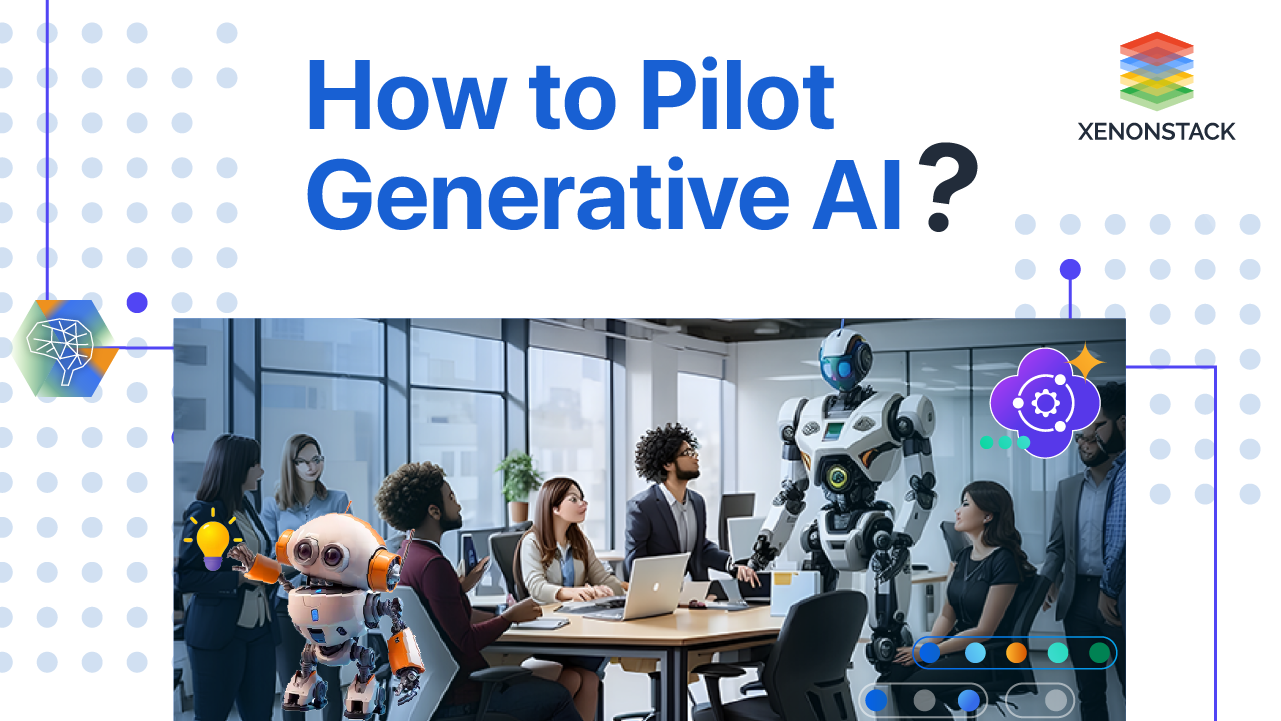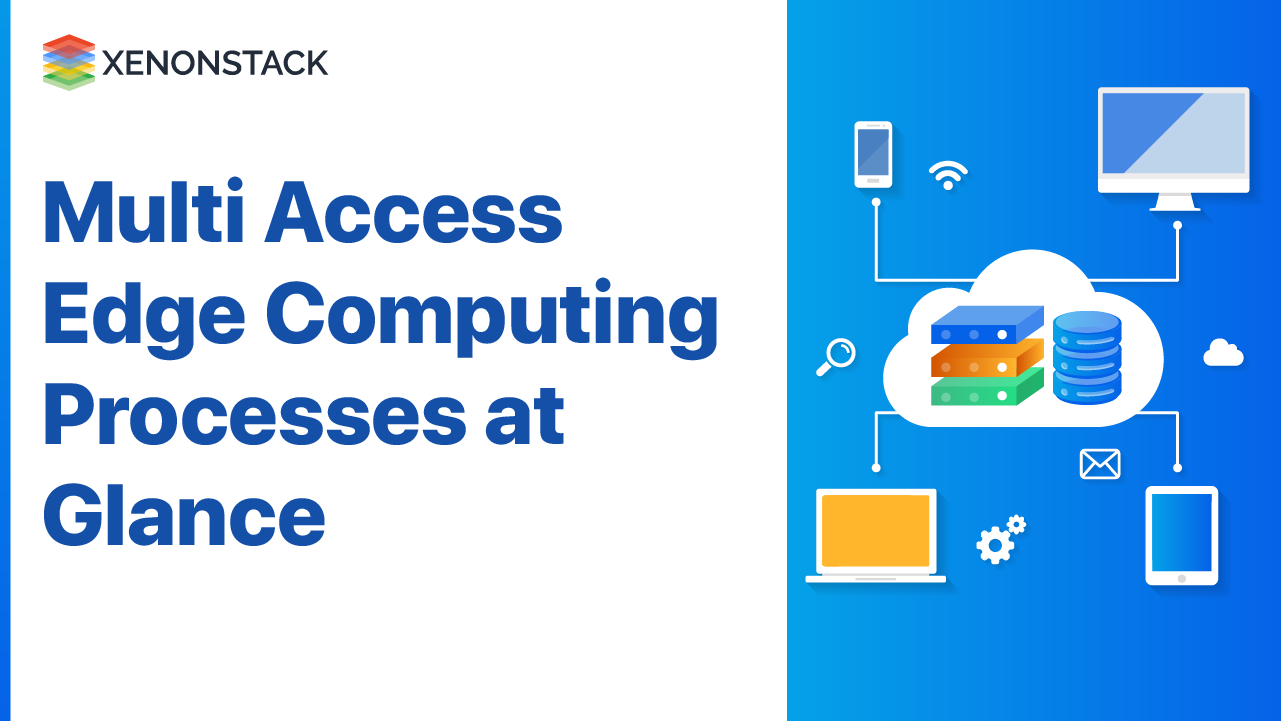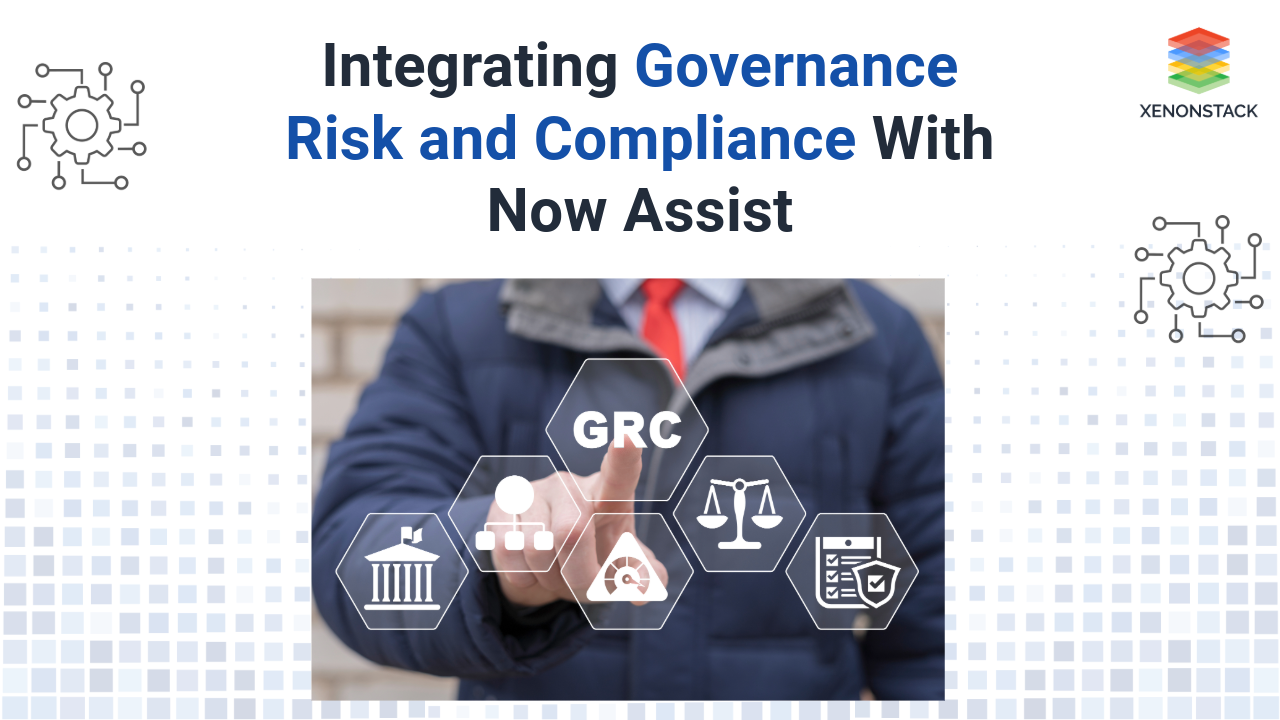
Introduction to the ServiceNow AI Platform
Enhancing Governance, Risk, and Compliance (GRC) with Now Assist integrates automation and real-time monitoring to support organizations in managing their risks and compliance requirements effectively. This holistic approach enables businesses to streamline their operations, ensuring adherence to regulatory frameworks while promoting accountability and operational efficiency.
Automated Risk & Compliance with ServiceNow AI Agents
Key Features
-
AI-Driven Automation: Automates risk assessments and compliance checks to maintain accuracy.
-
Real-Time Monitoring: Tracks compliance metrics continuously, allowing for quick responses to deviations.
-
Predictive Analytics: Utilizes historical data to foresee potential compliance issues before they become significant problems.
How It Is Helping
-
ServiceNow Agentic AI helps organizations minimize manual workload and enhances the accuracy of risk management processes.
-
By offering real-time monitoring, organizations can swiftly identify compliance deviations, fostering a culture of accountability and proactive risk management.
What It Does
-
It automates risk identification and compliance reporting, ensuring organizational operations remain within legal boundaries.
-
The streamlined approach from identification through resolution enhances the overall efficacy of risk management.
Impact
-
Organizations that employ automated risk management experience a notable reduction in errors and expedited compliance reporting.
- Automation improves operational efficiency, allowing personnel to concentrate on strategic initiatives rather than routine tasks.
Why This is Important
-
Automating risk management and compliance is crucial for effectively handling organizational risk exposure.
-
Minimized human error and proactive assessments are fundamental in adapting to dynamic regulatory landscapes while safeguarding the organization against potential penalties.
Figure: Workflow for Automation of Risk Management and Compliance
-
Risk Identification: Automated tools detect potential risks.
-
Risk Assessment: Evaluate risks against established criteria.
-
Compliance Monitoring: Ongoing tracking of adherence to regulations.
-
Reporting: Generate timely and accurate compliance reports.
-
Feedback Loop: Implement continuous improvement based on findings.
-
Architecture Infrastructure Layer: Provides necessary hardware and software resources.
-
Platform Layer: Core services for data analytics and workflow management.
-
Application Layer: Tools for managing the entire risk management lifecycle.
Efficient Policy Management through ServiceNow Autonomous Agents
Key Features
-
Centralized Policy Repository: A single location for all policies increases accessibility.
-
Automated Policy Lifecycle Management: Streamlines the creation, approval, and dissemination of policies.
How It Is Helping
-
AI Agents improves policy management by ensuring policies are up-to-date and communicated effectively, leading to enhanced compliance rates.
-
This improved process minimizes the likelihood of violations and enforces organizational standards.
What It Does
-
The platform automates policy lifecycle management, ensuring that all stakeholders are consistently aware of and adhere to current policies.
-
This results in improved operational accountability and compliance.
Impact
The efficiency of policy management results in higher compliance rates, faster response to changes, and reduced violations, contributing to an overall culture of compliance within the organization.
Why This is Important
-
Strong policy management supports fulfilling legal and regulatory requirements, bolstering accountability and optimizing operational effectiveness.
-
Effective communication of policies is essential for reinforcing a compliant organizational culture.
.jpg?width=1920&height=556&name=Artboard%201%20copy%204-100%20(1).jpg) Figure: Efficient Policy Management workflow
Figure: Efficient Policy Management workflow
- Policy Creation: Identify the requirements for new or updated policies.
- Review and Approval: Submit policies for stakeholder approval.
- Policy Dissemination: Distribute existing policies to all employees.
- Monitoring Compliance: Use tracking systems to ensure adherence to policies.
- Reporting and Review: Generate compliance reports and update policies as required.
Simplified Compliance Reporting via the ServiceNow Agentic Platform
Key Features
-
Automated Data Collection: Simplifies gathering documentation required for audits.
-
Real-Time Reporting: Delivers insights into audit readiness and compliance status.
How It Is Helping
-
ServiceNow Agentic AI modifies compliance audits by automating data collection and documentation, significantly easing the workflow for audit teams.
-
The reporting capabilities provide immediate insights that assist decision-making.
What It Does
-
It centralizes compliance data, facilitating more efficient audits and reducing the administrative burden associated with manual documentation.
-
Enhanced audit accuracy is achieved through automated reporting.
Impact
-
Streamlining compliance audits leads to increased time efficiency, cost reductions, and improved accuracy in audit results.
-
This efficiency allows organizations to navigate audits more confidently, demonstrating compliance with ease.
Why This is Important
-
Efficient audits are critical for preserving an organization's reputation and integrity.
-
Automating the audit process helps identify potential compliance risks ahead of time, solidifying the organization's commitment to governance and compliance.
 Figure: Streamlining Compliance Audits and Reporting Workflow
Figure: Streamlining Compliance Audits and Reporting Workflow
- Audit Scope Definition: Determine the objectives and parameters of the audit.
- Data Collection: Automate the gathering of relevant compliance data.
- Execution: Conduct audits using established workflows and protocols.
- Reporting: Produce real-time compliance reports detailing findings.
- Follow-Up Actions: Implement recommended corrective measures as indicated in audit reports.
Proactive Risk Mitigation with ServiceNow Workflow Data Fabric
Key Features
-
Early Risk Identification: Identifies potential threats before they materialize.
-
Continuous Monitoring: Tracks evolving risk environments for emerging threats.
How It Is Helping
-
AI Agents assists organizations in proactively assessing risks, enabling effective resource allocation to address potential threats preemptively.
-
This proactive strategy enhances organizational resilience against unforeseen disruptions.
What It Does
-
The platform automates risk assessment processes, facilitating the development of effective mitigation strategies and promoting a culture of preparedness.
Impact
-
Implementing proactive risk assessments enhances the visibility of the organizational risk landscape, leading to more informed decision-making and significantly reducing the occurrence of costly incidents.
Why This is Important
-
Proactive risk assessment is essential for maintaining a robust governance structure.
-
It empowers organizations to foresee potential threats and enforce effective controls, ensuring operational integrity and compliance.
 Figure: Workflow for Proactive Risk Assessment and Mitigation
Figure: Workflow for Proactive Risk Assessment and Mitigation
-
Risk Identification: Automated tools identify potential threats.
-
Risk Analysis: Assess the severity and potential impact of identified risks.
-
Prioritization: Rank risks based on likelihood and consequences.
-
Control Implementation: Execute strategies to mitigate identified risks.
-
Monitoring and Review: Continually assess the effectiveness of risk mitigation efforts.
-
Architecture Risk Management Database: Maintains risk assessments and historical data.
-
Analytics Engine: Supports predictive analytics for risk forecasting.
Architecture Diagram of the ServiceNow AI Platform
 Figure: Architecture diagram
Figure: Architecture diagram
Explanation
-
UI Layer: Contains the user-facing components such as the ServiceNow Portal, ServiceNow Autonomous Agents Interface, and Mobile App.
-
Application Layer: Includes ServiceNow Modules, Now Assist AI Engine, and the Workflow Engine responsible for the automation and logic processing.
-
Data Layer: Stores all the necessary data, including CMDB, incident/request data, compliance data, and Now Assist's knowledge base.
-
Integration Layer: Handles the integration of various components using REST APIs, Now Assist APIs, and data import/export interfaces.
-
Security Layer: Ensures security via identity and access management, encryption, and role-based access control (RBAC).
Use Cases of ServiceNow AI Agents in GRC
-
Compliance Management
ServiceNow's Governance, Risk, and Compliance (GRC) platform assists organizations in maintaining adherence to various regulations and standards, such as SOX, GDPR, and ISO 27001. -
IT Risk Management
The IT Risk Management application in ServiceNow allows organizations to continuously monitor risks that could adversely affect business operations. -
Audit Management
ServiceNow facilitates internal audit teams in effectively managing the entire audit lifecycle, including planning, risk assessment, project management, and reporting. -
Vendor Risk Management
The Vendor Risk Management solution focuses on the assessment and management of risks associated with third-party vendors. It streamlines the process by enabling organizations to configure assessments, validate responses, and create reports. -
Business Continuity Planning and Disaster Recovery
ServiceNow automates key aspects of Business Continuity Planning (BCP) and Disaster Recovery (DR). It helps organizations identify service dependencies and risks, allowing for the timely update of continuity plans.
Limitations of ServiceNow Autonomous Agents in GRC
Despite its benefits, enhancing GRC with ServiceNow Autonomous Agents may face challenges such as a complex licensing structure that can burden organizations, difficulties in implementation and customization that require specialized expertise, and usability issues with the interface leading to potential user adoption problems.
- Lack of Comprehensive GRC Framework
Many organizations struggle with establishing a comprehensive Governance, Risk, and Compliance (GRC) framework, which is essential for managing increasing complexities and regulatory demands.
- Fragmented Reporting and Communication
In a distributed or federated business model, communication and reporting can become fragmented, making it challenging to maintain regulatory compliance across different units.
- Persistence of Manual Processes
Many organizations still heavily rely on manual processes in their GRC practices, which hinders efficiency and increases the risk of human error.
Conclusion: The Future of GRC with ServiceNow Agentic Platform
By utilizing Now Assist for GRC processes, organizations can significantly improve their ability to manage risks, ensure compliance, and enforce policies more effectively. The integration of automation and predictive analytics facilitates a proactive governance approach, promoting resilience and sustainability in the face of evolving regulatory landscapes. The efficiencies gained in risk management and policy enforcement aid organizations in their overall operational integrity, while streamlined audits and proactive risk assessment enable effective mitigation strategies.
Explore more





